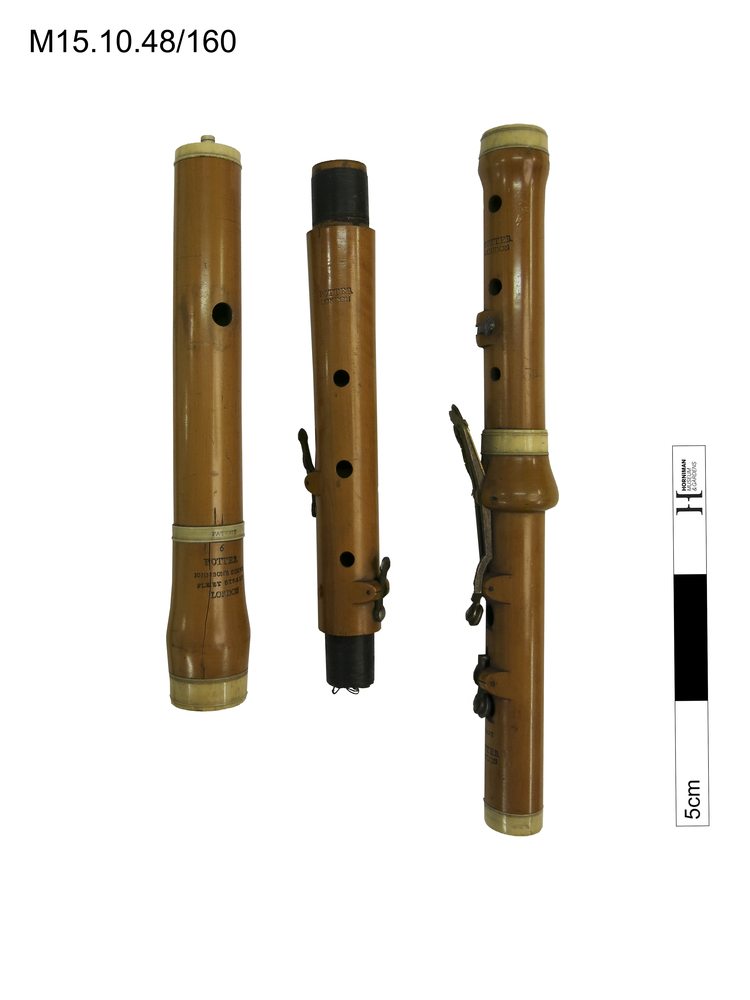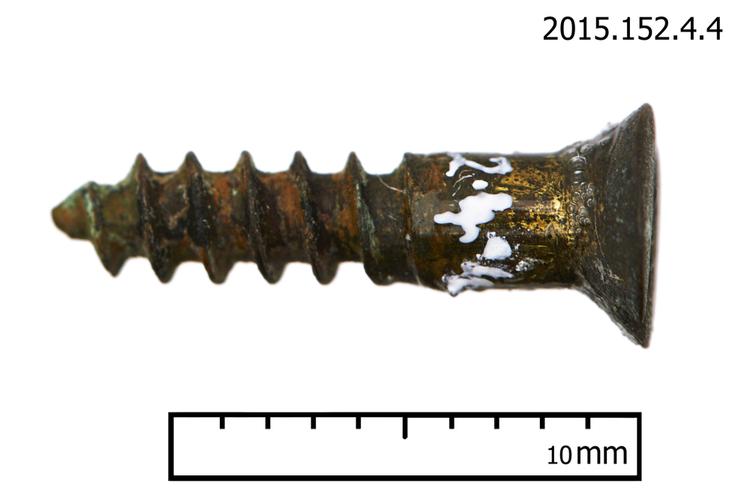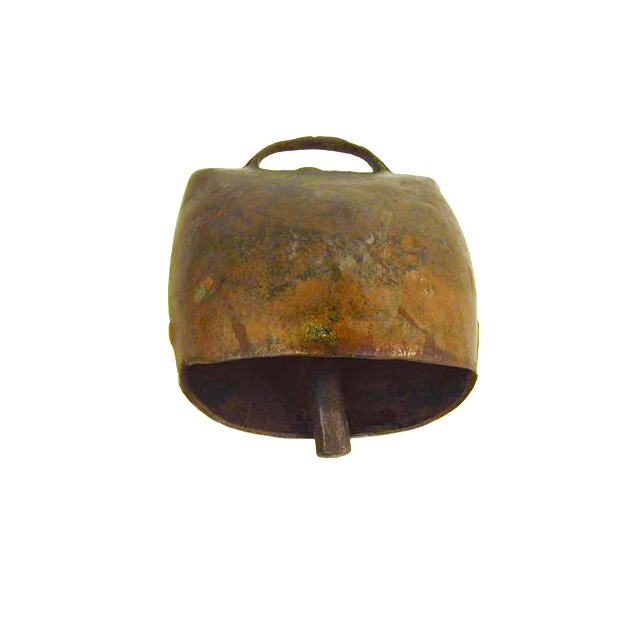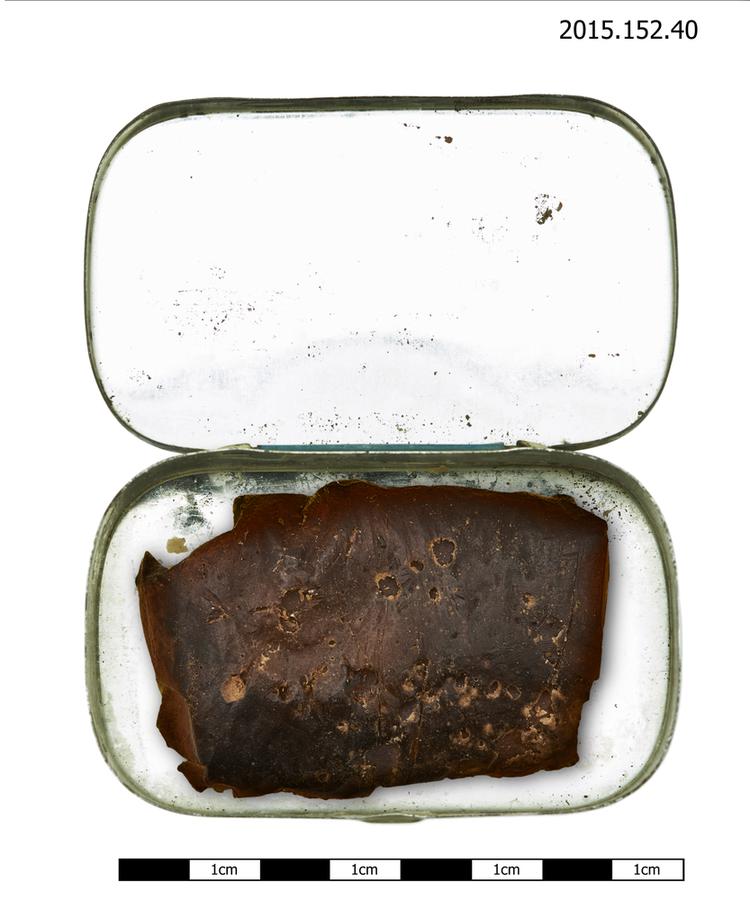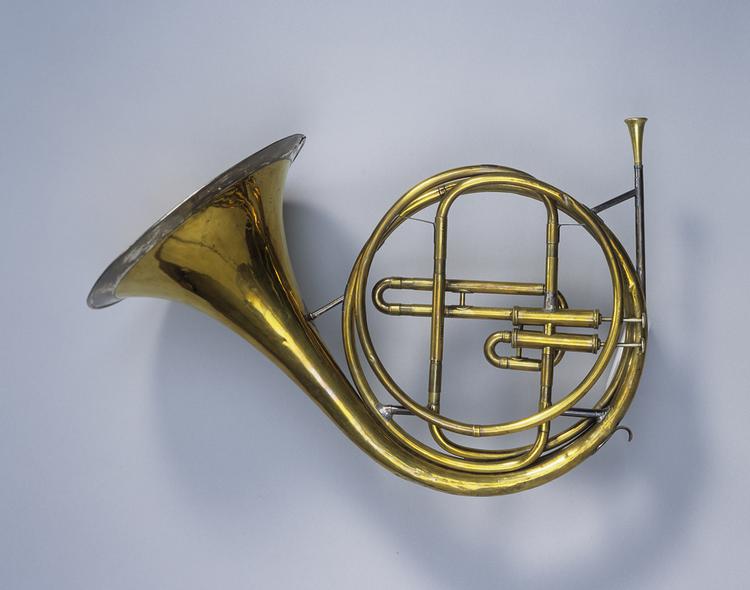
Hand horn, cor-solo. Brass body and crooks with silver mounts and bell garland. Hook for little finger. Crooks for F, E, E-flat. Later modified to accept a detachable valve section, sauterelle, with two Perinet valves. In the adaptation a plated brass mouth-pipe has been substituted, together with three stays and a sleeve to first valve. German silver valve touches and reinforcement at mouth-pipe joint. The finger touch of the second valve has been clipped off to enable the valve to be operated, suggesting that the valve set was not specifically produced for this instrument. Instrument lacks additional tuning slide leg tubing needed to play it as natural horn. Contemporary mouthpiece of turned brass. Mouthpiece receiver sleeve stamped with the oval poinçon of L.J. Raoux. Interior edge of bell garland engraved: 'RAOUX A PARIS 1814'. Engraved on bell garland: 'Barham Livius [gothic lettering] G.P.' [copperplate script].
This instrument is associated with Giovanni Puzzi and Barham Livius. Puzzi (1792-1876) was nineteenth century London's most celebrated horn player. He was a virtuoso soloist and played principal horn at the Philharmonic Society, Concerts of Antient Music and the Italian Opera at His/Her Majesty's Theatre. Puzzi was also well known as an operatic impresario and concert fixer. Livius was active in musical theatre in London and arranged a number of solos for Puzzi. This horn was originally built without valves. Raoux horns were so prized that many were fitted with valves when hand horn playing started to decline. Although Puzzi may have experimented with valves, he played the hand horn throughout his career. Because he was left handed, Puzzi placed his left hand in the bell of the instrument and would have operated the valves with his right hand. It is unlikely that he added these valves to this horn, not least because they are designed for use by the left hand.



